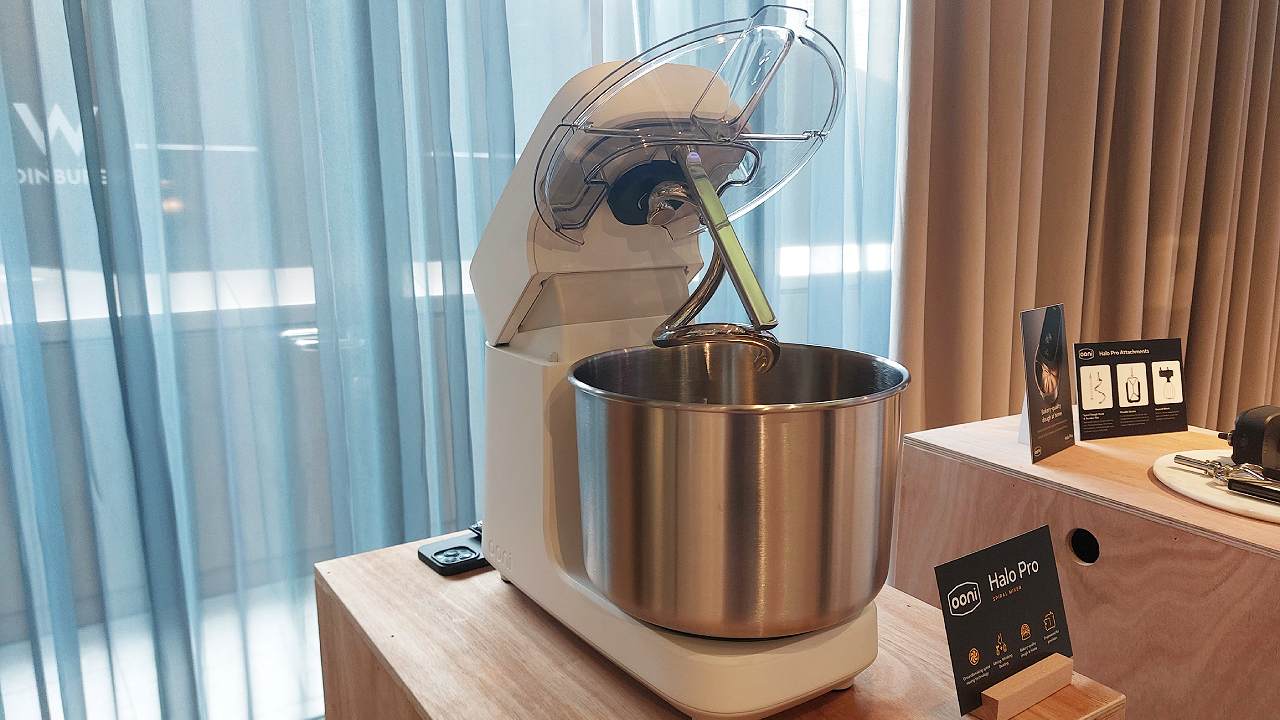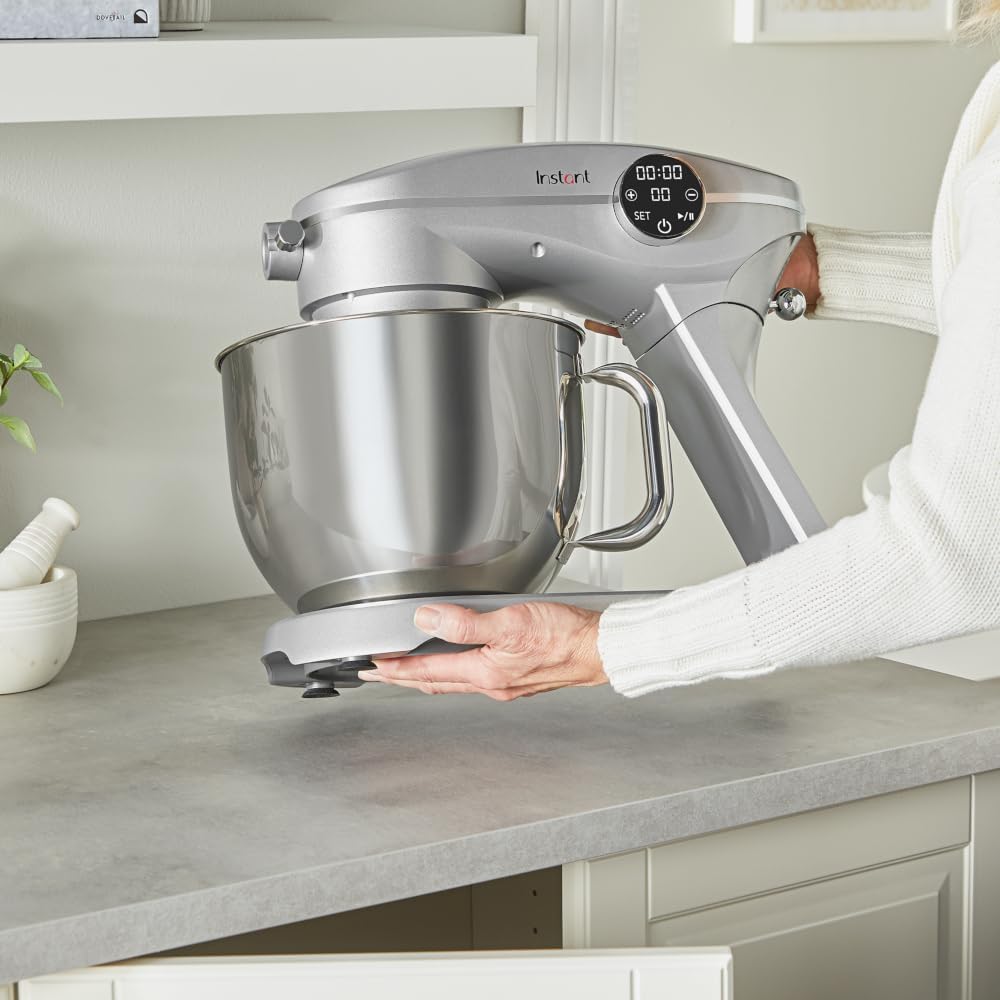Welcome to Stand Mixer Pro! Are you ready to take your baking from a weekend hobby to a true passion? If you’re tired of arm-numbing whisking and inconsistent dough, learning How To Choose A Stand Mixer is your first, most exciting step. I still remember the day I unboxed my first stand mixer; it felt like hiring a professional sous chef. Suddenly, silky meringues, perfectly developed bread dough, and batches of cookies were no longer a chore, but a joy. This powerful kitchen appliance isn’t just a gadget; it’s a game-changer, a workhorse, and a trusted partner on your culinary adventures. But with so many options out there, how do you find “the one”? Don’t worry, I’m here to walk you through it, step-by-step.
Why a Stand Mixer Is Your Kitchen’s Best Investment
Before we dive into the nuts and bolts, let’s talk about the why. Is a stand mixer really worth the counter space? Absolutely. If you’re serious about baking or even just want to make your kitchen life easier, this is an investment that pays dividends in flavor and time.
- Hands-Free Efficiency: Imagine creaming butter and sugar to fluffy perfection while you measure out your dry ingredients. A stand mixer frees up your hands, allowing you to multitask and work more efficiently.
- Power and Consistency: A stand mixer’s motor delivers consistent power that your arms simply can’t match. This is crucial for developing gluten in bread dough or aerating egg whites for macarons, resulting in superior texture and volume.
- Versatility Beyond Baking: With the right attachments, your stand mixer can become the central hub of your kitchen, capable of grinding meat, rolling pasta, making ice cream, and even spiralizing vegetables. It’s so much more than a cake maker.
- Larger Batches: Whether you’re baking for the holidays, a bake sale, or a large family, a stand mixer’s generous bowl capacity lets you double or triple recipes with ease, something that’s nearly impossible with a hand mixer.
The First Big Decision: Tilt-Head or Bowl-Lift?
When you start shopping, you’ll immediately notice two main designs. Understanding the difference is key to knowing how to choose a stand mixer that fits your space and baking style.
Tilt-Head Mixers
Just as the name suggests, the motorhead on these models tilts back, giving you easy access to the bowl and beater.
- Pros: Easy to add ingredients, simple to attach and remove the bowl and accessories, often slightly smaller and lighter, making them ideal for standard home kitchens.
- Cons: The hinge can be a potential weak point over time, and they can sometimes vibrate or “walk” on the counter when kneading very heavy, dense doughs.
Bowl-Lift Mixers
These are the workhorses. Instead of a tilting head, a lever raises the bowl up to meet the mixing attachment. This design is common in commercial kitchens and for serious home bakers.
- Pros: Incredibly stable due to the fixed head, generally more powerful and built to handle heavy-duty tasks like large batches of sourdough or stiff cookie dough without breaking a sweat.
- Cons: Can be trickier to add ingredients as there’s less clearance, and removing the bowl and beater takes a bit more practice. They are also taller and heavier, so you’ll need to measure your space, especially if you plan to store it under cabinets.
“Your first choice between tilt-head and bowl-lift really defines your baking journey,” notes pastry chef Amelia Evans. “For most home bakers making cakes, cookies, and the occasional loaf of bread, a quality tilt-head is perfect. If you’re dreaming of churning out multiple loaves of artisan bread every week, invest in a bowl-lift. You won’t regret it.”
Decoding the Specs: What Really Matters in a Stand Mixer
Let’s get into the nitty-gritty. Marketers love to throw numbers around, but what do they actually mean for your chocolate chip cookies?
Power: Why Wattage Isn’t the Whole Story
You’ll see wattage advertised everywhere, but it can be misleading. A mixer with 500 watts isn’t necessarily better than one with 325. What’s more important is the type of motor and the torque it produces—its actual rotational strength.
- AC (Alternating Current) Motors: Often found in tilt-head models like the classic KitchenAid Artisan series. They are reliable and powerful enough for most tasks.
- DC (Direct Current) Motors: Typically found in higher-end, bowl-lift models. They are quieter, more energy-efficient, and deliver more consistent torque, meaning they can power through tough dough without getting bogged down.
Think of it like this: Wattage is how much energy the car uses, while torque is how easily it can climb a steep hill. For bread bakers, torque is king.
Bowl Size and Capacity
Stand mixer bowls are measured in quarts. The most common sizes are between 4.5 and 7 quarts.
- 4.5 – 5 Quarts: The sweet spot for most people. This size can handle a recipe for about 8-9 dozen cookies or 2 loaves of bread.
- 6 – 7 Quarts: Ideal for large families, avid bread bakers, or anyone who regularly doubles recipes. You can knead enough dough for 4+ loaves of bread at once.
A quick tip: Always check the model’s capacity for flour, which is a more accurate measure of its bread-making ability than just the liquid quarts.
The Holy Trinity of Attachments
Nearly every stand mixer comes with three essential tools:
- Flat Beater (or Paddle): Your all-purpose tool for creaming butter and sugar, mixing cake batter, and making cookie dough.
- Dough Hook: An absolute must for kneading bread, pizza, and brioche dough. It mimics the motion of hand-kneading, saving you a ton of effort. Look for spiral-shaped hooks, as they are generally more effective than the C-shaped ones.
- Wire Whip (or Whisk): Used for incorporating air into ingredients. It’s perfect for whipping cream, beating egg whites into stiff peaks for meringue, and making light, airy frostings.
Speed Settings
Look for a mixer with at least 5 speed settings, but more is often better. A crucial feature is a “soft start” function, which begins mixing at a lower speed to prevent flour from flying everywhere before ramping up to your selected speed.
A Quick Comparison of Popular Mixer Types
| Feature | Tilt-Head Mixer (e.g., KitchenAid Artisan) | Bowl-Lift Mixer (e.g., KitchenAid Pro Line) |
|---|---|---|
| Best For | All-purpose home baking, cakes, cookies | Heavy-duty tasks, frequent bread baking, large batches |
| Capacity | 4.5 to 5.5 quarts | 5.5 to 8 quarts |
| Power | Good (Typically AC motor) | Excellent (Often DC motor) |
| Stability | Good | Exceptional |
| Ease of Use | Very easy to access bowl | Requires a small learning curve |
| Footprint | Smaller, fits under most cabinets | Taller and heavier, needs dedicated space |
Maintaining Your Kitchen Workhorse
You’ve learned how to choose a stand mixer, and now you’ve brought one home. Congratulations! To ensure it lasts for decades (and many are built to do just that), proper care is essential.
Cleaning Your Stand Mixer
Always unplug your mixer before cleaning!
- Attachments and Bowl: Most stainless steel bowls and coated attachments (flat beater, dough hook) are dishwasher-safe, but always check your user manual. Hand-wash any uncoated aluminum or burnished accessories to prevent oxidation and discoloration. The wire whip should always be hand-washed.
- The Mixer Body: Wipe down the body and head with a damp, soft cloth. Never submerge the mixer in water.
- Nooks and Crannies: Use a soft brush or a toothpick to gently clean flour out of the ventilation slots and the hinge mechanism.
Quick Maintenance Checks
- The “Dime Test” (for KitchenAid models): Periodically check the clearance between your beater and the bottom of the bowl. If it’s too high, it won’t mix properly; too low, and it can scratch the bowl. The user manual will show you how to adjust the beater height screw so that a dime placed in the bowl is just barely moved by the beater.
- Listen for Strange Noises: While mixers are loud, listen for any new grinding or clicking sounds, which could indicate a gear or motor issue that needs professional attention.
Frequently Asked Questions (FAQ)
Here are some of the most common questions I get from bakers just starting their journey.
What size stand mixer do I need?
For the average home baker, a 5-quart stand mixer is the perfect size. It provides enough capacity for doubling most cookie recipes and making standard loaves of bread without being too bulky on the countertop.
Can a stand mixer knead all types of dough?
Yes, a good quality stand mixer with a powerful motor and a dough hook attachment is designed to knead everything from soft brioche to stiff bagel dough. For very dense, low-hydration doughs, a bowl-lift model will provide the best stability and power.
Is a more expensive stand mixer really better?
Often, a higher price reflects a more powerful DC motor, larger capacity, and all-metal gear construction, which translates to better durability and performance for heavy-duty tasks. However, a mid-range model from a reputable brand like KitchenAid or Kenwood is an excellent, long-lasting choice for most home users.
How many watts should a good stand mixer have?
Don’t focus solely on watts. A 325-watt tilt-head mixer with an efficient AC motor can handle most tasks beautifully. For serious bread bakers, look for high-performance DC motors found in pro-level models, which deliver superior torque regardless of their wattage rating.
What else can I make with a stand mixer besides baked goods?
So much! With the right attachments, you can make fresh pasta, grind your own meat for burgers, shred chicken, mash potatoes, churn ice cream, and even juice fruits and vegetables. It’s a truly versatile kitchen appliance.
Your Culinary Journey Starts Now
Choosing a stand mixer is about more than just buying another kitchen appliance; it’s about investing in your creativity, your time, and the joy of making something delicious from scratch. Whether you’re a novice baker or a seasoned pro, the right machine will feel like an extension of your own hands. By considering your baking habits, kitchen space, and the key features we’ve discussed, you can confidently make a choice that will serve you well for years to come. Now that you know how to choose a stand mixer, the only question left is: what will you create first?
2 thoughts on “How to Choose a Stand Mixer: The Ultimate Expert Guide”